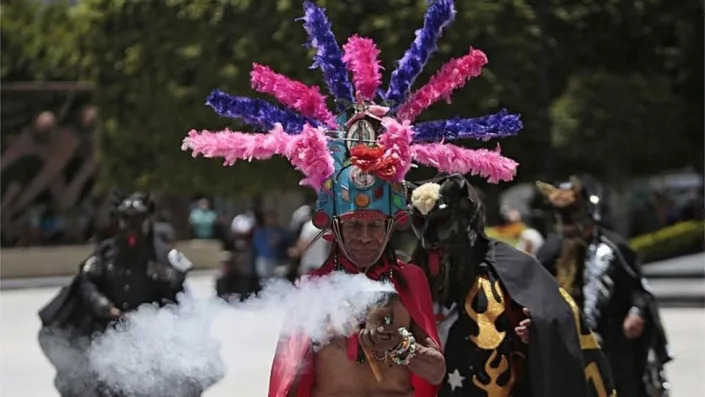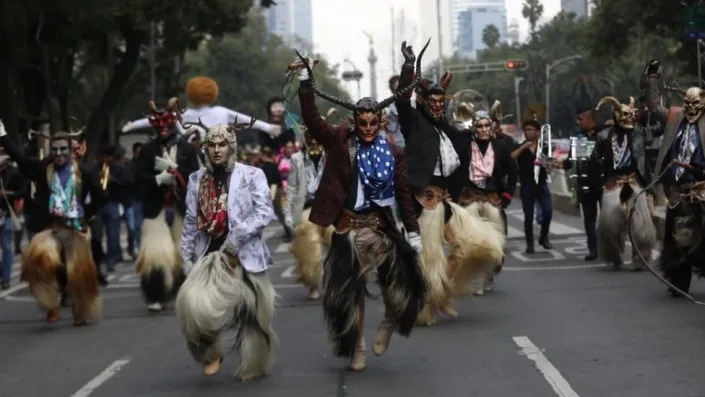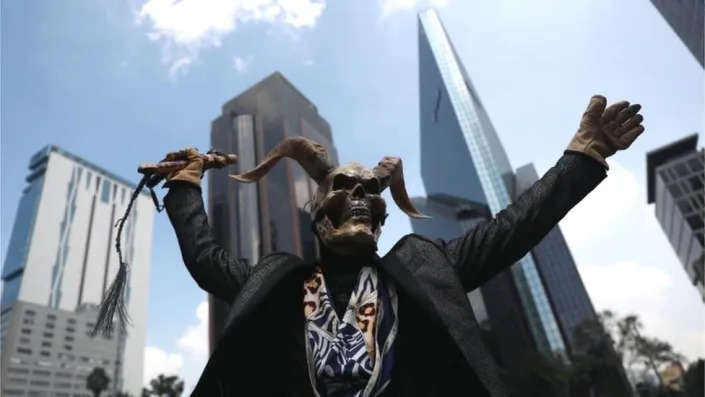Members of Mexico’s indigenous communities took to the streets of the capital on Tuesday to celebrate their heritage and demand more rights.
Their Mexico City march marked the United Nation’s Day of the World Indigenous Peoples.
A spokesman for the march said 18 indigenous communities took part in the celebration.
They wore traditional clothing as they marched down Reforma Avenue in the city’s centre.

Among those taking part were indigenous groups from the south-western state of Oaxaca such as Triqui, Mazatec and Zapotec, as well as groups from southern Chiapas state, such as the Tzetal.

Spokesman Pascual de Jesús said the idea behind the parade was to give visibility to the many indigenous people living in the capital and to combat discrimination.

The Diablos of Juxtlahuaca (Devils of Juxtlahuaca) in their elaborate horned masks were among the highlights of the parade.

The Devils of Juxtlahuaca traditionally perform their dance on 25 July, the feast day of Santiago (Saint James), the patron saint of Juxtlahuaca.
But as the Devils have tried to expand knowledge of their traditions, the dance is now performed on other occasions, too.

The dance dates back to the times of the Spanish conquest of Mexico, when Spanish priests tried to convert the indigenous Mixtec people to Catholicism.
They organised dances representing events in Spanish history which had a strong religious significance, such as the battles to regain control of Spain from the Moors and impose Christianity.
The mock battle showed the fighters for Christianity, led by Saint James, defeating their Muslim rivals.

The dances are performed to this day: at one point, a dancer representing an injured Moor is given the choice to convert to Christianity.
He refuses, saying he would rather be taken away by devils than betray his religion. It is then the dancers dressed as devils enter the stage and drag him away.
Source: BBC





